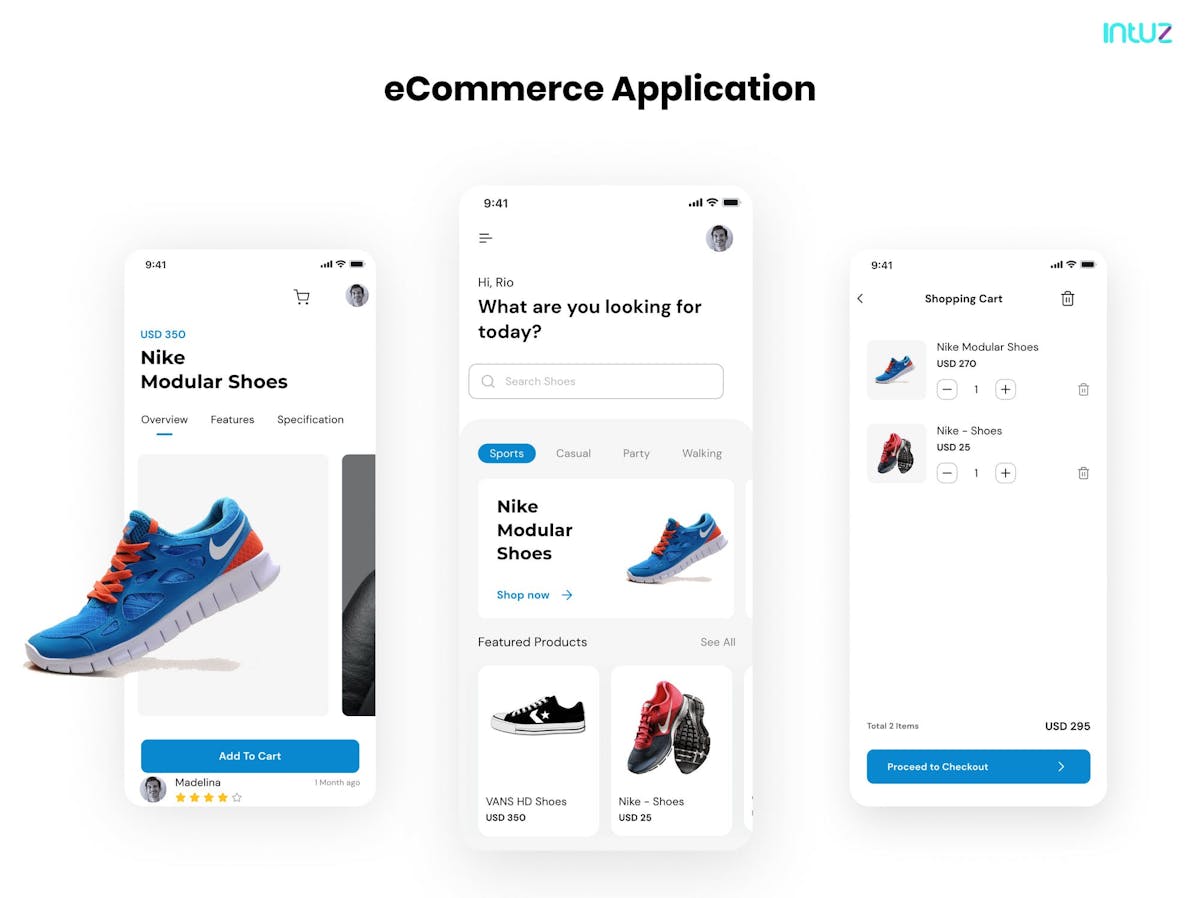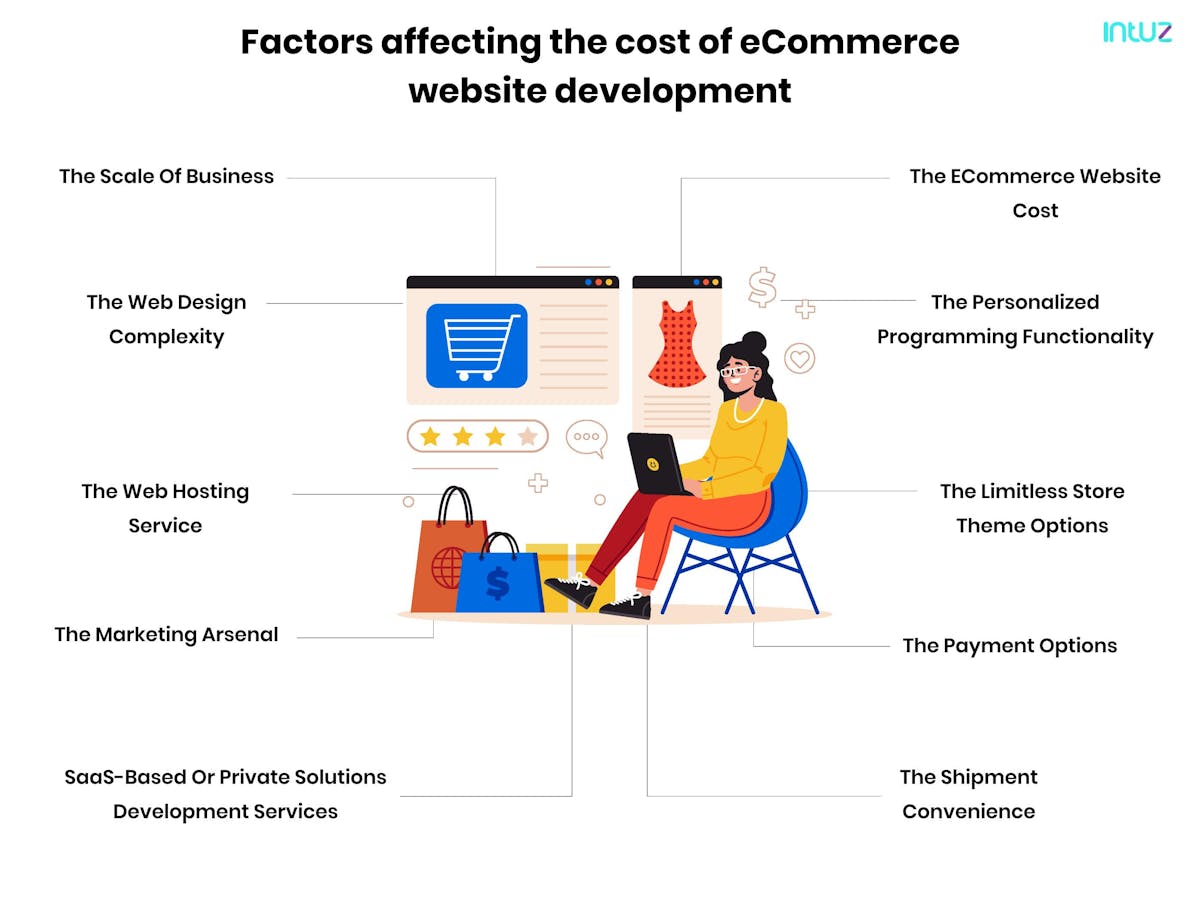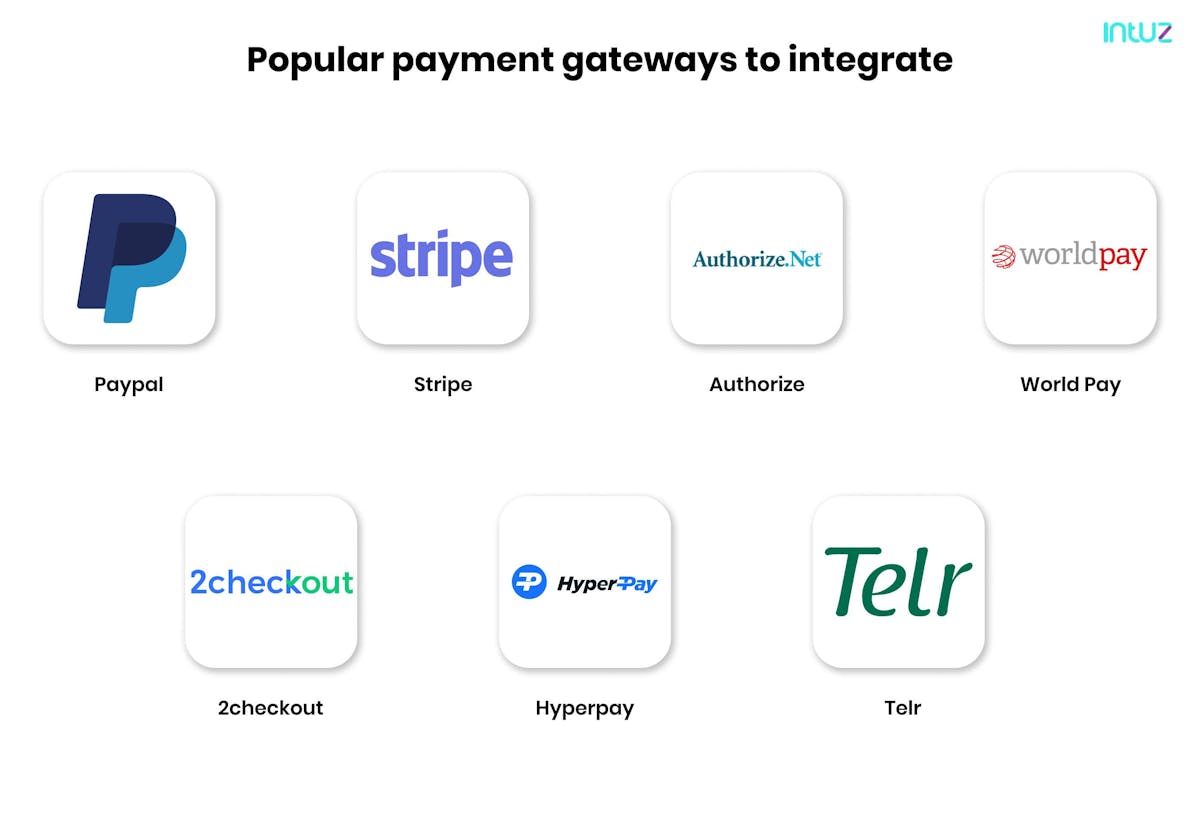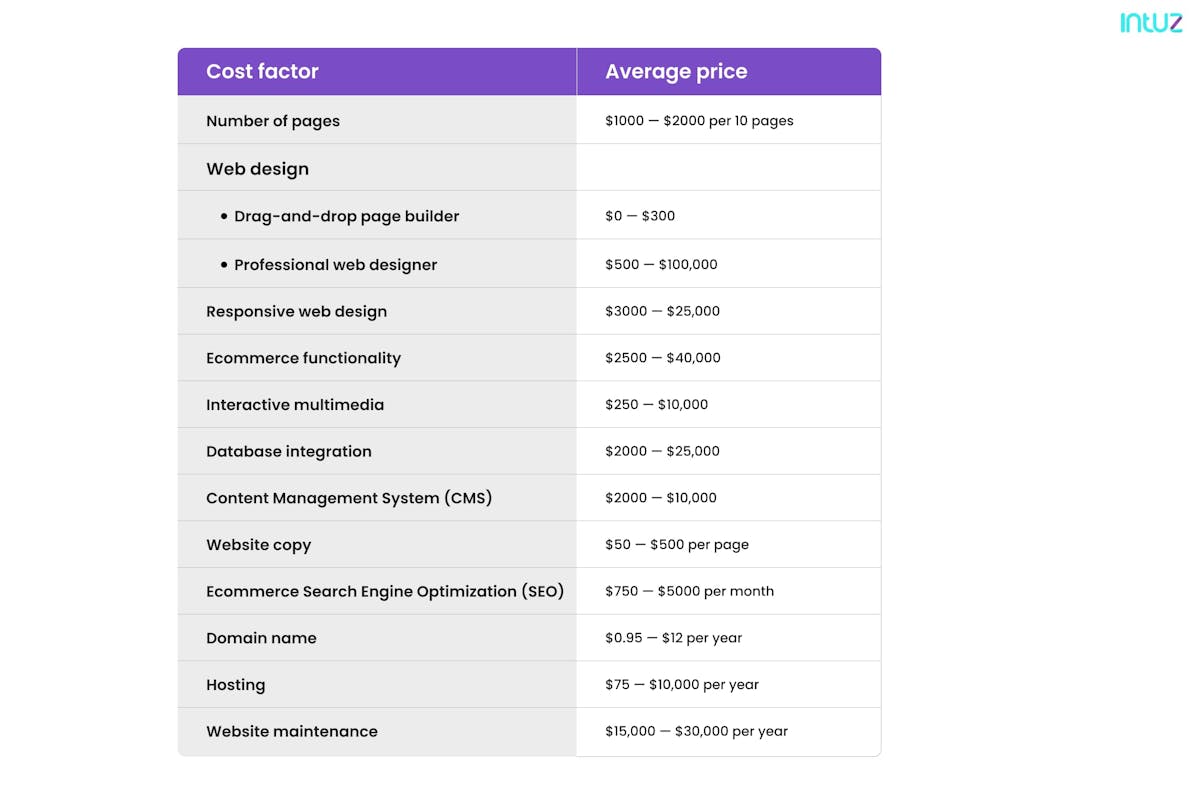How much does an eCommerce website development project cost, you ask? That depends on many factors, from the scale of your businesses and the plugins you want to add to the store theme options and additional configurations you want. This article will not only explain the factors to consider for calculating the costs but also share a ballpark figure of the entire project.
Table of Content
In this day and age, no eCommerce business can thrive without having a proper website in place. You see, the rising demand for convenience and multiple options has accelerated the popularity of online shopping.
With more consumers turning to eCommerce platforms, building a robust and scalable solution is mandatory. On top of that, you must integrate a CMS and payment processing system to streamline the shopping process.
But all of this comes at the eCommerce website cost that can start at $15/hour (yes, that cheap!) and go up to several thousand dollars, depending upon your requirements. But before diving deep into the monetary aspect of building an eCommerce website, let us first understand the basics.
What is an eCommerce site?
An eCommerce platform (or site) refers to an end-to-end software solution that allows online retailers to run and manage their business. It typically comprises website builders, customer service infrastructure, including the accounting and inventory management systems.
Modern eCommerce sites can even unify and leverage both front-office applications with their unique data and the back-end systems that manage shared information.
Ecommerce websites particularly align core business processes and offer complete visibility across the company to meet customers' expectations. They run on a unified platform offering a 360° customer view to the business owner.

Factors affecting the cost of eCommerce website development
An eCommerce website’s cost can be calculated after considering all details, from the design to features and technological requirements. To come up with one definitive price for your project, you should first list each element you want on your site.
The most important thing when estimating the eCommerce website cost is considering your business needs and planning ahead of time to avoid surprises in the future. Significant factors impacting the cost of development include:
1. The scale of business
Ecommerce websites have varying scopes for selling products as per their customer's needs. Some may revolve around a single product, while others may sell multiple products from multiple vendors.
Your business goals will define the ideal website design that would help you achieve them. A small online store with few products can be set up for $5000, but the cost may increase to $ 80,000+ as you scale your business with more eCommerce features.
2. The eCommerce website cost
You must build an eCommerce website as per your audience. Much can be decided based on your business model as the design will vary for B2B, B2C, C2C, and C2B business models. A different digital strategy will be required for engaging the audience of each of these models.
The eCommerce development cost involves the following:
a. Platform
Ecommerce solutions come at different prices depending on their out-of-box features, the type of software they offer, and the scope of after-sales services. You can pick from the popular ones like BigCommerce, Magento, or Shopify.
Some platforms can be more expensive than others. Still, it is essential to choose wisely as this will affect your entire eCommerce store experience from the start and throughout the growth stages rather conveniently.
b. Domain name
Purchasing a domain name is a recurring cost and expensive, so it is essential to do your research before committing. You must pick a name that is easy to remember and relates to the products you are selling.
It is crucial to make sure no other websites are using the term to avoid any infringement issues. The yearly eCommerce website cost of a domain name can start from $10 and above when purchased through providers such as GoDaddy.
While you can opt for a custom extension, it is recommended to opt for a .com extension if you intend to sell internationally.

c. Hosting service
The domain you have purchased must be hosted as well. Third-party hosting services such as BigCommerce and Shopify offer web hosting in their subscriptions. These are great when you are getting started as they save the time you would have spent searching third-party providers.
Depending upon the traffic to your eCommerce store, a self-hosted website may cost in a range of $80 to $500+. The cost may vary according to the required features, while some service providers may even provide pre-installed automated back-end systems.
d. Secure Sockets Layer (SSL) certificate
A secure shopping experience boosts your online sales. The SSL certificate is one of the least expensive but most important components of an eCommerce website. It protects your customer data against theft and also helps sites improve their search engine ranking.
Beyond that, it establishes customer trust in your brand by ensuring their data is safeguarded against breaches. The price of an SSL certificate ranges from $30 to $90+ per year. It may be included with your hosting plan, so you must take clarity before investing in one.
3. The web design complexity
Designing an eCommerce store involves more than just choosing from a list of templates. It is about creating a unique user experience that reflects your brand. Designing a website comes with some cost based on the theme, add-ons, and functionalities you opt for your eCommerce website. Broadly you would pay for the following in eCommerce website design:
a. Site design and theme
With so many eCommerce website design themes to choose from, it can be not easy knowing which one will best suit your store. Try to pick the design that matches your brand style and products.
The good part is some templates are free to use and would not cost anything extra than what you are already paying. If you pick a premium design, the price ranges between $60 to $200.
Ensure the theme you select is optimized for different devices and can scale as your catalog grows. Cornerstone is BigCommerce's most popular theme, preferred by digital store owners owing to the responsiveness and flexibility it offers to its eCommerce site.
b. Add-ons, extensions, and plugins
To create a successful eCommerce site, you must have the right features in place. It would be best to use the right add-ons and plugins to improve the CX by making your site easily navigable. These plugins may be expensive, but their benefits are enormous.
Some free options are also available for simple functions like displaying product information or clearing complicated design elements cluttering up the product pages.
A clear and easy-to-navigate layout reduces distraction and boosts conversions. Most eCommerce platforms offer a variety of add-ons to match your requirements. Here are a few examples you can knick for your eCommerce site:
- BigCommerce, for instance, offers a range of add-ons for free and also a host of premium options. You can save roughly $5 to $30k+ per year with the out-of-the-box functionality of this eCommerce platform.
- Magento has many extensions in its marketplace; while some are free, others may cost from $50 to as high as $500+ depending on the feature. Most of these add-ons must be customized before you can use them. The process often requires a lot of time and money and is thus only suited for large-scale storefronts.
- On the other hand, Shopify gives you access to hundreds of free and premium apps. The paid ones on the eCommerce platform may start from as low as $4.99 per month.
- WooCommerce offers over 55,000 plugins to WordPress users. There is an add-on available for any possible feature you would need — ranging from $19 to $299 and above, and can even be customized at an additional cost.
4. The personalized programming functionality
Custom eCommerce software development aims to create a website specific to your audience. You can add or remove functions as per your business needs.
In contrast with Commercial-Off-The-Shelf (COTS) products that fulfill only the basic needs of an eCommerce business, custom programming makes your platform robust. A custom website requires more expertise but often ends up costing less in the long run.
Finding an affordable eCommerce programmer is not easy, as the average hiring cost would be around $90,000 per year.
5. The web hosting service
You need a reliable hosting service provider that can store your site's files under a domain name for easy access. When it comes to eCommerce hosting, there are three options to pick from. Each of them has different hosting costs and technical requirements:
a. Shared hosting
This is a good option if you do not want to spend all your time managing servers and software. You can download files through an FTP client on the eCommerce platform or by accessing the special panel on the site with your username/password combination.
Shared hosting providers allocate resources while also charging monthly fees based on the space you need. The monthly cost ranges from $2 to $150.
b. Virtual Private/Dedicated Servers (VPS/VDS)
These are perfect for hosting eCommerce websites. With one physical server, you can have up to many virtual machines running on it in an isolated environment along with root access controls at your disposal.
This option is great if you want security and frictionless performance. It may cost you $20 to $200 per month for eCommerce website development.
c. Dedicated server
This is a physical machine that has been pre-configured to meet the specific needs of your organization. It includes all configurations and is helpful for eCommerce portals with large visitor counts. Depending on your business requirements, you will have to pay between $79 to $500 per month.
6. The limitless store theme options
The design and appearance of your eCommerce store play a significant role in attracting customers. Platforms such as Shopify, BigCommerce, and WooCommerce offer thousands of paid and free themes. These themes are available starting at $30.
A well-designed store enhances the customer experience manifolds. You can also use drag-and-drop page builder plugins to create a custom theme and further modify your basic eCommerce website.
These plugins are often available at no extra charge and allow you to tailor your website within minutes. If a complex design meets the needs of your eCommerce website, then you would require professional assistance from experienced developers.
Though expensive, these custom themes are unique, and they incorporate features fitting different industries and specific customer demographics.
You can speak to a custom development service provider and get an idea about their quotation. Alternatively, you get access to advanced tools, including SEO optimization options as well. The basic eCommerce website cost in this scenario ranges from $2500 to $15000.
7. SaaS-based or private solutions development services
Long for software as a Service, SaaS, and custom eCommerce platforms are the most reliable and flexible options. You can choose the right one based on your business needs. SaaS platforms are easy to set up, and implementation cost is low.
On the other hand, custom eCommerce platforms allow you to create your site from scratch, but the initial and ongoing eCommerce website cost can be rather high.
SaaS platforms cost around $30 per month, though premium plans can increase by $300 per month. Private solutions can cost between $75 to $10,000 per year or even more.
8. The marketing arsenal
A well-planned marketing strategy will be needed to attract shoppers to your eCommerce website. A blend of SEO, PPC campaigns, copywriting, remarketing, and other digital strategies can help generate traffic for the eCommerce website.
The costs will depend on the scale of web pages in your eCommerce platform. Marketing expenses for a small eCommerce store typically range from $500 to $2,000, while for larger websites, it starts at $4,000 and goes up to $5,000.
9. The excellent payment options
Most of your online sales will happen through digital transactions. Therefore, you must integrate a payment gateway for accepting online payments through different modes such as credit/debit cards, net banking, UPI, e-wallets, and even cryptocurrencies.
To offer additional convenience, you must tie up with multiple gateways and provide various options to your customers. You may easily overlook the cost of accepting payments, but it is an important consideration in eCommerce website cost.
A transaction fee must be paid to the third-party payment gateways and, in some cases, even the bank against each payment received on your site. A currency exchange charge will also be applicable if you accept money from different regions.
The charges for the most popular gateways:
- PayPal (US): 2.9% + $0.30 for transactions over $10. The rate for locations outside the US increased to 4.4% plus currency fees.
- Stripe (US): 2.9% + $0.30 per transaction; additional 1% is levied on international cards
- Authorize.net (US): 2.9% + $0.30 per transaction + $25 monthly fee (after the first 12 months).

WooCommerce and BigCommerce are popular platforms that offer the lowest prices for payment processing services, so you might want to check them out. They also provide the flexibility to customize the checkout experience.
10. The shipment convenience
Your eCommerce shipping strategy must increase conversions and expand the target audience. The strategy should take into consideration product size, weight, international shipping, and carriers. Customers hate hidden shipping costs, so please ensure you are transparent about all kinds of payment processing costs.
There are free and paid extensions that let you print labels and display pre-negotiated career costs. Integrating shipping calculators on your website will allow your customers to avail discounts. Costs of these add-ons and plugins range from $0 to $99.
So, how much does it cost to build an eCommerce website?
Frankly speaking, the expenses vary! But if you still want to experiment with numbers for building your eCommerce website, do factor in the elements we discussed in the previous sections and identify the costing based on the breakdown as shared below:

Ecommerce websites need maintenance and that costs as well
Constant maintenance of your eCommerce site will ensure smooth operations and reduce downtime. This is something many amateur business owners often forget to factor in. Eventually, poor storefront maintenance ends up costing them a lot of money.
Therefore, you can cut down on sale losses by fixing bugs or errors on your page. It is a recurring cost ranging from $15,000 to $30,000 per year, but the investment in your eCommerce website design is worth it compared to the benefits. You will see!
Over to you
Custom eCommerce website development, mobile development, and custom eCommerce migration are the three types of services that include eCommerce web development.
You can improve the experience of a custom eCommerce development service through AI-powered digital equipment. Magento, Shopify, or BigCommerce are some scalable and secure options that will help grow your brand online.
And if you are looking to build a storefront from scratch or upgrade one, you need an expert eCommerce platform builder who can help you take your eCommerce business to greater heights.
Our expert developers have worked on many eCommerce platforms, and it might be worth having a chat with us to share your requirements. You never know you might be able to create something unique with our help! Contact us today.

